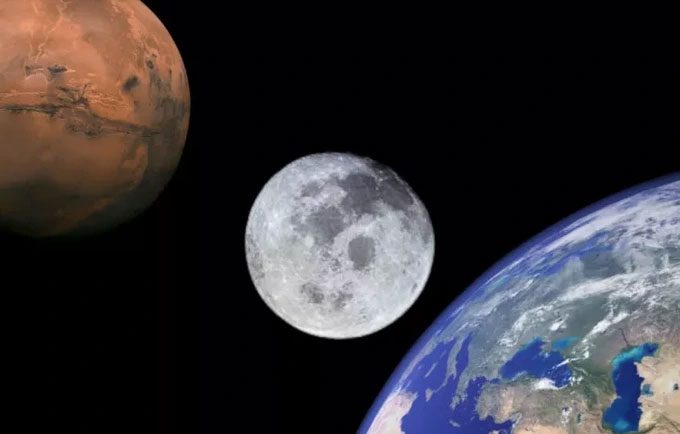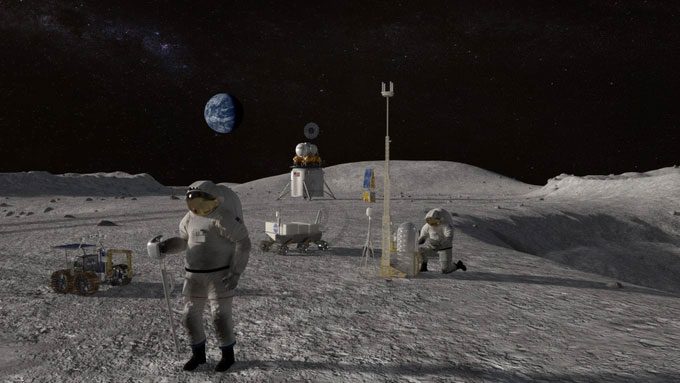The Artemis-1 mission by NASA is set to kick off the next era of human space exploration, with Mars as its primary destination.
The journey of human space exploration is about to enter its next phase, with the “big bang” being NASA’s Artemis mission.

NASA sees the Moon as a stepping stone for humanity’s journey to Mars.
Although this mission will return humans to the Moon after more than half a century, many experts believe it is merely a necessary lever for humanity to aim for a higher goal: setting foot on Mars.
This sentiment is echoed by NASA itself. “Artemis-1 will propel us towards similar missions on Mars with a crew,” said Jim Free, Deputy Associate Administrator for NASA’s Exploration Systems Development Mission Directorate, in a statement.
Why the Moon?
There are many planets in the Solar System, but none are as “familiar” to Earth as the Moon. Additionally, a key advantage of using the Moon as a “stepping stone” towards Mars is its proximity to Earth.
Typically, a crewed mission can reach and depart from the Moon in just three days. In contrast, a mission traveling directly from Earth to Mars or vice versa would take at least seven months.

The Artemis-1 mission will return humans to the Moon after more than half a century.
This advantage allows scientists to calculate variables in actual flights, rather than relying solely on laboratory simulations on Earth.
Specifically, during this mission, NASA will pay attention to the effects of microgravity on the human body during crewed flights, in order to assess the impact of long-duration flights to Mars.
The Artemis-1 mission will also carry small satellites into space, tasked with mapping the distribution of water on the Moon. These satellites will search for trapped hydrogen reserves, primarily found in ice deposits near the lunar poles.
According to NASA, water found on the Moon could not only sustain life for astronauts but could also be converted into rocket fuel.
If this plan succeeds, the Moon will become a “fueling station” for further space flights. In other words, rockets launched from Earth will significantly reduce their payload for future missions.
A “Gateway” to Mars

The Artemis-1 mission serves as a necessary test for long-duration space travel.
While Artemis-1 serves as a necessary test for long-duration space travel, another NASA plan promises even more. That is the Gateway space station.
Gateway is expected to be the first space station operational in lunar orbit. It will serve as a docking point for spacecraft and provide refueling capabilities.
Additionally, the station will feature a module called the Habitation and Logistics Outpost (HALO), which will serve as living and working quarters for engineers and scientists.
Gateway will also play a crucial role in transporting essential materials to the Moon, helping humanity develop infrastructure there. If all goes according to plan, this will be a stepping stone for human settlement on Mars.
It is important to note that these are not short-term goals. NASA estimates that humans may not set foot on Mars until the late 2030s or early 2040s at the earliest.


















































